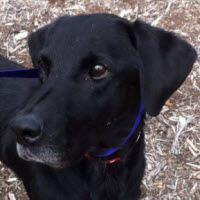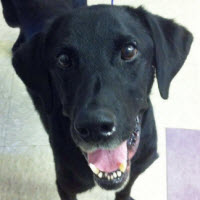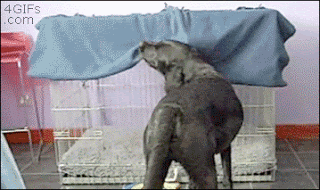With warmer temperatures finally coming, many dog owners are exploring options to help their pets stay comfortable.
Shaving off all that hair is probably the most popular option. Indeed, for some coat types, this is an ideal solution. Not for all.
With the exception of hard-coated terriers, dogs come in one of two coat types: single coated and double coated.
Examples of single-coated breeds are poodles, shih-tzus, bichons, etc.
Double-coated or fur-bearing breeds have coats that grow to a predetermined length. They can be further separated into open coats and closed coats.
These breeds have a hard, protective outer coat (guard hairs) and a soft, dense undercoat. Examples of open, double-coated breeds are any of the spitz-type breeds, such as Siberian huskies, Pomeranians and chows.
This coat is designed to shed snow or ice and provide maximum protection against freezing weather.
Closed, double-coated breeds have noticeably longer guard hairs, which lay down over the undercoat, sort of like a blanket. While the outer, or guard, hairs get wet, the undercoat works to keep the dog’s skin dry. Examples include golden retrievers, Australian shepherds and Newfoundlands.
Single-coated breeds can be clipped down to the skin, and the coat will grow back pretty much as it was before. The same is not true for double-coated breeds. For this reason, shaving these dogs down is not a solution to summer heat.
Think of a healthy double coat as an old-growth forest. There is a balance with different parts providing different benefits. If you clear-cut an old growth forest, there will be immediate regrowth of a lot of young trees very soon.
Unfortunately, they won’t initially be the same kind as those you cut down. Instead, the forest has to start from scratch and spend decades, first growing ground cover and softwoods that provide an environment for slower growing hardwood varieties. It takes generations before the natural balance is restored.
While on a much shorter timeline, it’s the same thing with a double-coated dog. Guard hairs represent old growth, and undercoat represents ground covering vegetation.
The act of shaving a double coat removes the dog’s natural insulation and causes his system to kick into high gear. He’ll now produce coat to protect himself from extreme temperatures, sunburn and sharp objects.
Since the top coat or guard hairs take a long time to grow, what the dog’s body produces first is soft undercoat. That’s why we hear people say, “I shaved my dog, and it grew back twice as thick and really fuzzy!”
In reality, what happens is that the original coat isn’t restored at all. What grows in instead is thick, prolific undercoat mixed with short new guard hairs. We call it false coat or coat funk.
So, why is this bad? Picture this scenario:
It’s 90 degrees outside. You’re getting dressed to go work in your yard. Are you going to put on a light cotton T-shirt and sunblock or thermal underwear and a sweatshirt?
A dog’s shaved-down false coat is like that sweatshirt. It’s dull, soft and soaks up water like a sponge. Burrs and foxtails stick like Velcro. Above all else, it’s way too thick for hot weather.
By the time that false coat grows out enough to protect the dog from sunburn, scrapes and bites (the usual job of the top coat), it is so thick that the poor dog might as well be wearing thermal underwear and a sweatshirt.
Remember, Mother Nature designed the undercoat to be extremely heat-retentive.
Do you take your dog to a grooming salon? You can request a bath and blow-out. Virtually all modern professional grooming salons have high velocity blow dryers in their work areas.
These powerhouses can literally blast the dead undercoat out of your dog’s hair after a thorough bathing with minimal brushing and combing needed.
The benefit to your dog is a healthy, balanced coat you can both live with. Sure, you could opt for the shave-down, but you’ll more than likely be back in a month or so for another “shave-down” because your dog is cooking in its own hair.
Then, if you’re like most owners who fall into this cycle, you’ll intentionally let your dog’s woolly false coat grow out all winter “for warmth,” only to have it shaved off again in the spring.
In reality, all winter long while you’re under the false notion that your dog is staying warm and dry under that thick layer of fuzz, his coat is matting, retaining water and mud and possibly even mildewing. It will stay cold and wet for hours. Do you see the vicious cycle that started?
In some cases, owners really don’t have a choice. If there’s an underlying skin condition, requiring removal of the hair, obviously shaving is the lesser of two evils.
Same applies if the coat is so matted that shaving is truly the most humane option, affording the owner a chance to start over and improve their brushing skills.
These are situations to thoroughly discuss with both your veterinarian and your groomer so you can make an informed decision.
However, if your sole motivation for shaving your dog in the spring is to “keep him cool,” you need to know that you’re actually creating a far worse situation than you think.
Aside from destroying coat integrity, shaved dogs are susceptible to a multitude of complications, including, but not limited to, alopecia, heat stroke and skin cancer, specifically Solar-induced Squamous Cell Carcinomas and Dermal Hemangiosarcomas.
Sometimes, these complications are not reversible.
When the days get long and hot, you can strip down to shorts and a tank top, but your cat has to wear a fur coat all year long. So what can you do to keep your feline friend comfortable during the summer?
1. Ice Ice Baby
2. Ice Ice Baby, Part 2
3. Elevate the Bed
4. Number One Fan
5. Do the Dew
6. Call It Curtains
7. Postpone the Playing
8. And, of Course, Never, But Never, Leave Your Cat in Your Car
Over the past few years I have accumulated quite a list of pet blogs that I subscribe to. They come in all shapes, sizes, and topics. Recently, I stumbled on this one called YouDidWhatWithYourWeiner. The title alone made me giggle; so I had to read more! Wouldn’t you? One of her recent articles, entitled I Don’t Brush My Dog’s Teeth was one I completely related to. Not all dogs are delighted with brushes and paste, even if they do taste like liver. She mentioned that giving your dog a high-protein, grain-free kibble can cause teeth to worsen. I had no idea! I’m going to do some research this week. Have any of you heard this? What do you think?

 Xander is a 4 year old neutered black male. He is up to date on his shots and is heartworm positive; Lab Rescue will pay for his treatment. He is good with other dogs and is approved for kids aged 10 and up. He weighs 45 lbs. He knows some commands including sit and is working on down but would benefit from some additional training. He walks ok on a lead but does better with an EZ Walk harness. He is gentle and friendly and adores people.
Xander is a 4 year old neutered black male. He is up to date on his shots and is heartworm positive; Lab Rescue will pay for his treatment. He is good with other dogs and is approved for kids aged 10 and up. He weighs 45 lbs. He knows some commands including sit and is working on down but would benefit from some additional training. He walks ok on a lead but does better with an EZ Walk harness. He is gentle and friendly and adores people.Xander has settled in nicely here. He loves to play with my two labs and has good house manners. He is housebroken and crate trained. He is gaining weight nicely and has a wonderful appetite. He is very sweet and affectionate and good on leash too. He rides well. Xander loves balls and toys and will play as long as you will let him! He has to carry a ball or toy around in his mouth all the time. It is very cute. He is not destructive of toys at all, he just loves to carry them around! He really has a great personality and is getting more handsome every day as he gains weight. Just thought I would share this funny video with you. This is how he lets us know that they are all ready to come back in the house LOL. He is like “Hey! Whatcha doing in there? Come let us in!” It is too cute!
Can cats read? Probably not. Even if they could, they wouldn’t tell us anyway. Most cats we know like to keep an air of mystery about them.
We recently discovered (and were a small part of) a new digital magazine called CATS Magazine, or CatMagg.
In it you can find articles on topics like healthy cat food choices, cheap and easy homemade cat toys, and how to survive bathing your cat. Yikes!
We are proud to tell you that one of our own has submitted an article to CatMagg and was published!
Jessica’s article How to Protect Your Furniture from Kitty’s Claws appears on page 6 of the May Edition.
|
Misty is a 9 year old black spayed female. She is up to date on her shots and is heartworm negative. She is good with other dogs but not cats, and is approved for kids aged 10 and up. She weighs 47 lbs and should gain a few. Misty is a very sweet, friendly and gentle girl who has no idea she is 9!
Update from Misty’s foster family – 5/2/2013 Misty has only been with us for a few days, but she has settled into our household routine quickly. On our very first walk together she was excited and did lots of sniffing and pulling. By the morning walk the next day she had improved dramatically and by the evening she was walking nicely. She adapted well to the Easy Walk harness. She has reacted, with a great deal of excitement, to squirrels that we have seen and would give chase if I let her go. She notices birds and reacts with interest to them also. Since the weather was so nice the second evening she was with us, we decided to take Misty and the resident Lab out to dinner at an outdoor cafe in our neighborhood. Both girls were extremely well behaved even with other dogs and diners nearby. Misty is people oriented and loves to snuggle and be stroked and petted. She especially loves belly rubs and will roll onto her back, with her legs straight up in the air, and wiggle her whole body, just begging you to rub her belly. Her tail is like a metronome, going back and forth all the time. In fact the most noise we’ve heard from her is the tail thumping on the wall. We have yet to hear her bark. At night she sleeps loose in the bedroom, alternating between a dog bed and the floor. So far her manners have been good. She is very food motivated and is a quick and eager learner. In the house, and in the fenced yard, she will usually come quickly when called. She enjoys being near you. If you’re looking for a loving and devoted companion with a sweet personality and pleasant energy level Misty may be the girl for you. With Mother’s Day fast approaching Misty asked me to mention that she since has been a mother several times she is hoping that someone will now honor her with a permanent loving home where she can be showered with love on May 12. If you are interested in Misty, contact Lab-Rescue at
(301)299-6756.
|
Ingredients:
1 Large Sweet Potato, washed & dried
Instructions:
- Preheat oven to 250° F
- Line a baking sheet with parchment paper.
- Cut off one side of the sweet potato lengthwise, as close to the edge as possible. Cutting the side of the potato first allows you to then turn the potato onto this flat surface that you have just created. Having a stable area to rest the potato will make it easier to cut the potato into slices. Don’t discard that first piece, it comes out just as yummy as the rest!
- Cut the rest of the potato into 1/3″ slices, no smaller than 1/4″.
- Place them on the prepared baking sheet.
- Bake for 3 hours, turning half way through.
- Cool completely on a wire rack.
Degree of Chewiness – Baking for 3 hours results in a soft, but chewy dog treat. If your dog prefers more of a crunch, then bake for an additional 20-30 minutes. When you take the sweet potatoes out of the oven, they may at first appear to be too soft. Let them cool completely on a wire rack before you decide whether or not to bake them longer. This is because they will continue to dry or harden while cooling.
































